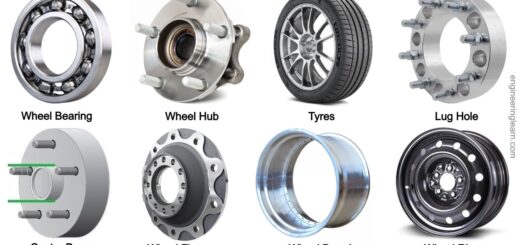11 Types of Car jacks – Uses, Sizes, Advantages & Safety Precautions [Explained with Pictures]
![11 Types of Car jacks - Uses, Sizes, Advantages & Safety Precautions [Explained with Pictures]](https://engineeringlearn.com/wp-content/uploads/2022/06/Car-jacks-1024x539.jpg)
What is Vehicle Jack?
Types of Car jacks – Uses, Sizes, Advantages & Safety Precautions [Explained with Pictures]: – A car jack is a device used to raise the vehicle’s body. It’s typically slid under the car’s frame and then cranked to lift it off the ground. This allows technicians or do-it-yourselves to operate on the vehicle’s underneath.
Most jacks are hydraulic, which means they work by using fluid pressure. A hand pump pumps oil into a tiny cylinder used to operate this sort of jack. As more oil enters the cylinder, more pressure is created, eventually elevating the car’s body.
Some automobile jacks are manual, which means they rely on human strength rather than hydraulics to operate. To elevate the automobile body, these jacks usually contain a screw mechanism that must be twisted. While manual jacks are more challenging to use than hydraulic jacks, they do not need access to fluids.
When your car is raised, the jack stands to support its weight. Even while car jacks perform the hard lifting, if you need to crawl beneath the vehicle, you’ll need to use jack stands to keep the vehicle stable. Crawling beneath a car only supported by a jack is never a good idea.
Some automobile lift kits include jack and jack supports, although they may also be purchased separately. Jack’s height and weight capacity are determined by his maximum height and weight capacity. The size is generally between 13 and 25 inches, and the weight capacity is between 2 and 25 tonnes.
Types of Car jacks
You may utilize a variety of automobile jacks in your garage, including:
- Floor Jacks
- Bottle Jacks
- Scissor Jacks
- Farm Jacks
- Exhaust Air Jacks
- Pneumatic Jack
- Hi-lift Jack
- Strand Jack
- Hydraulic Jack
- Trolley Jack
- Motorcycle Jack
1. Floor Jacks: ( Types of Car jacks )

Floor jacks are essential tools that assist you in elevating the car you’re working on. Thanks to hydraulics, you can promote a piece of the vehicle using a hand lever. These gadgets are powerful and don’t need a lot of mechanical knowledge to use.
Consider the vehicle’s weight when selecting floor jacks for your car. Floor jacks should generally be rated for at least three-fourths of your vehicle’s weight. Even though a floor jack only raises a section of your automobile not the total weight overloaded jacks may be dangerous. They’re also more challenging to use.
Most floor jacks include wheels, making them simple to manoeuvre throughout your garage. However, their weight and bulk make them less portable for on-the-go use.
2. Bottle Jacks: ( Types of Car jacks )
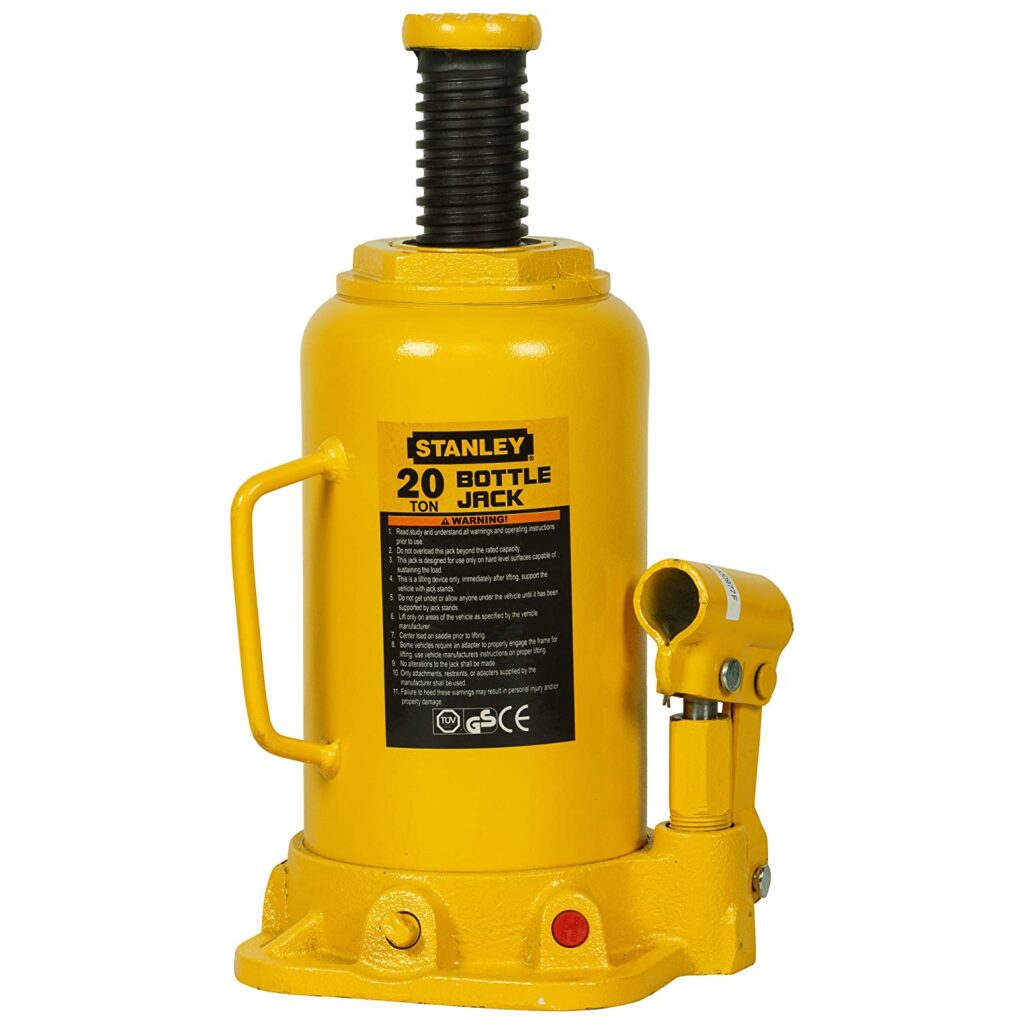
A bottle jack is a hydraulic jack with an expanded cylindrical body that resembles a bottle. Bottle jacks function similarly to a regular hydraulic floor jack, except they can carry greater weight. They also raise the car off the ground. One of the drawbacks of this function is that it requires a greater starting clearance, making it more challenging to operate on lower cars.
Bottle jacks are less expensive than floor jacks, making them useful as a backup set for mechanics and as the primary equipment for hobbyists and home repair enthusiasts.
3. Scissor Jacks: ( Types of Car jacks )
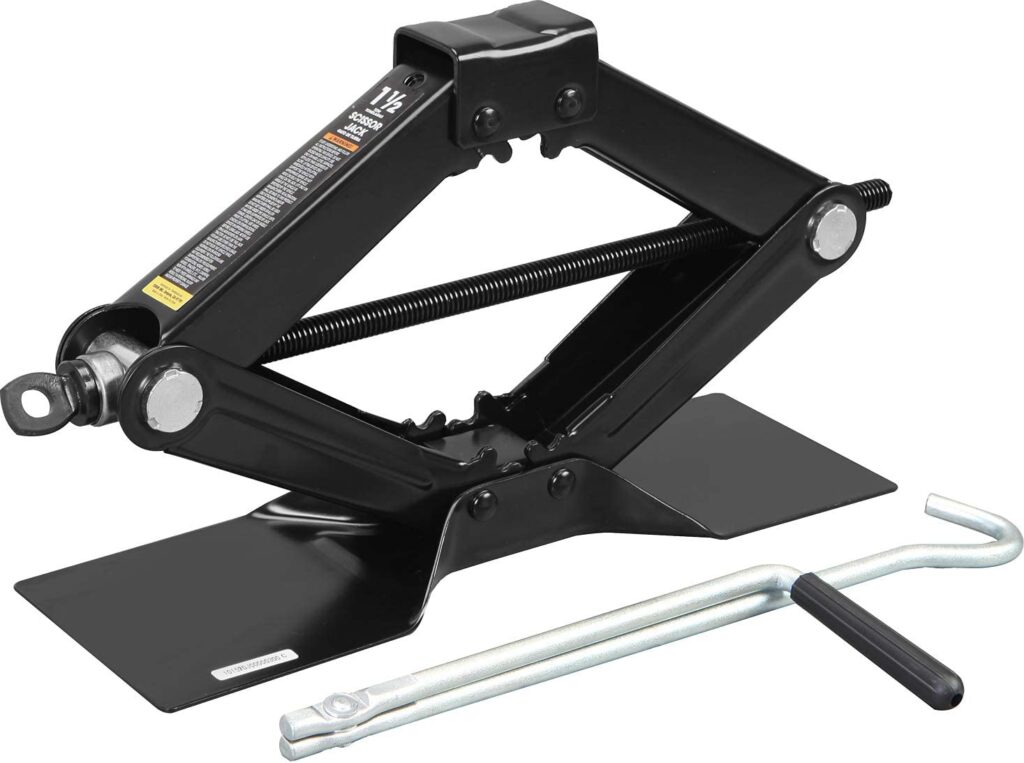
When correctly positioned, scissor jacks employ a hand crank to elevate a car. Scissor jacks are appropriate for lighter vehicles since their capacity is generally rated at one or two tonnes. They also feature a modest lift height, ranging from 15 to 30 inches, depending on your model.
A scissor jack’s main advantage is its safety, especially when compared to high-lift and agricultural jacks, which need more care and skill. In comparison to floor jacks, scissor jacks are also lightweight and cost-effective. This makes them a great choice if you need a portable jack that you can quickly move about.
4. Farm Jacks: ( Types of Car jacks )
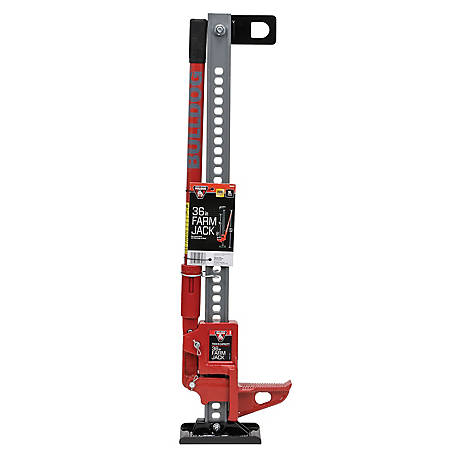
Agricultural jacks are often used to lift farm equipment, but you don’t need to be a farmer or work on a tractor to utilise one. Many people use them for off-roading cars and trucks with high clearance.
Farm jacks, also known as high-lift jacks, are small enough to fit in a big or off-roading vehicle’s rear. They may be used to assist with tyre changes, but their primary use is to free a car stuck in mud or rough terrain. Farm jacks may also be used as a winch or a clamp, making them a versatile tool in specific scenarios.
Farm jacks might be helpful in your garage when you need to jack up a car with a lot of clearance, and a conventional floor jack or bottle jack won’t do the job. Traditional floor jacks or bottle jacks will suffice for most automobiles and trucks.
5. Exhaust Air Jacks: ( Types of Car jacks )

Exhaust air jacks are a particular jack that uses the air from your exhaust to inflate. An inflated bag and a lengthy hose that connects to the exhaust pipe are included with these jacks. The sack may be placed beneath the chassis without affecting the jack points. One side of the automobile will be raised off the ground after inflating the bag. A one-way valve keeps the air within while also allowing you to deflate the bag.
These jacks are ideal for off-roaders since they can be utilized on various surfaces. They’re perfect for softer terrain like dirt, sand, or snow because of their more significant surface area. They’re also portable and take up minimal room while not in use.
6. Pneumatic Jacks: ( Types of Car jacks )
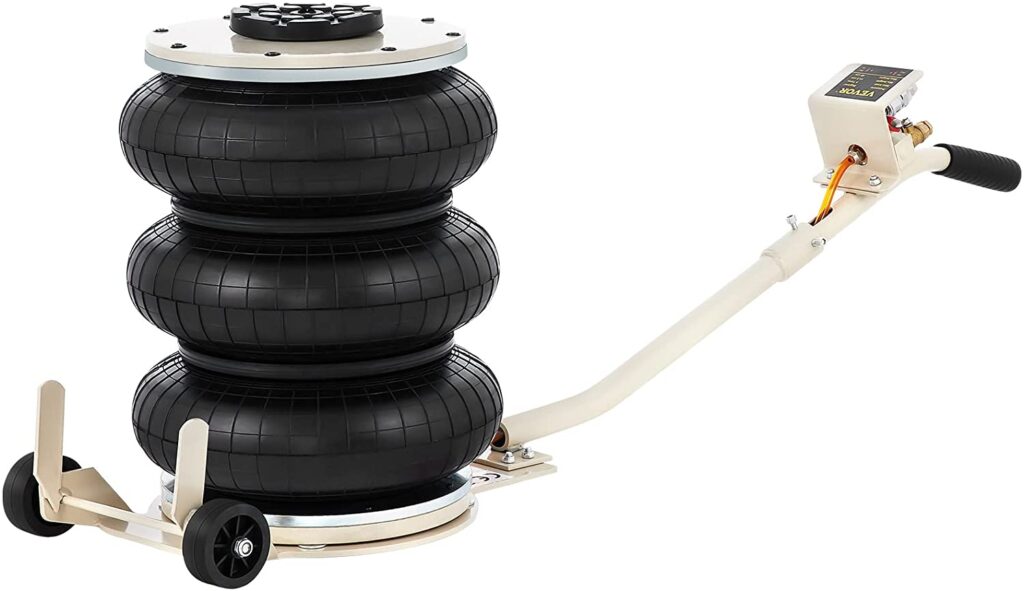
The pneumatic jack, also known as a telescopic jack, is most often used in the heavy equipment maintenance business to raise buses, trucks, and construction vehicles. Smaller cars are not advised to use them. Heavy equipment and construction activity are examples of applications.
7. Hi-Lift Jack: ( Types of Car jacks )
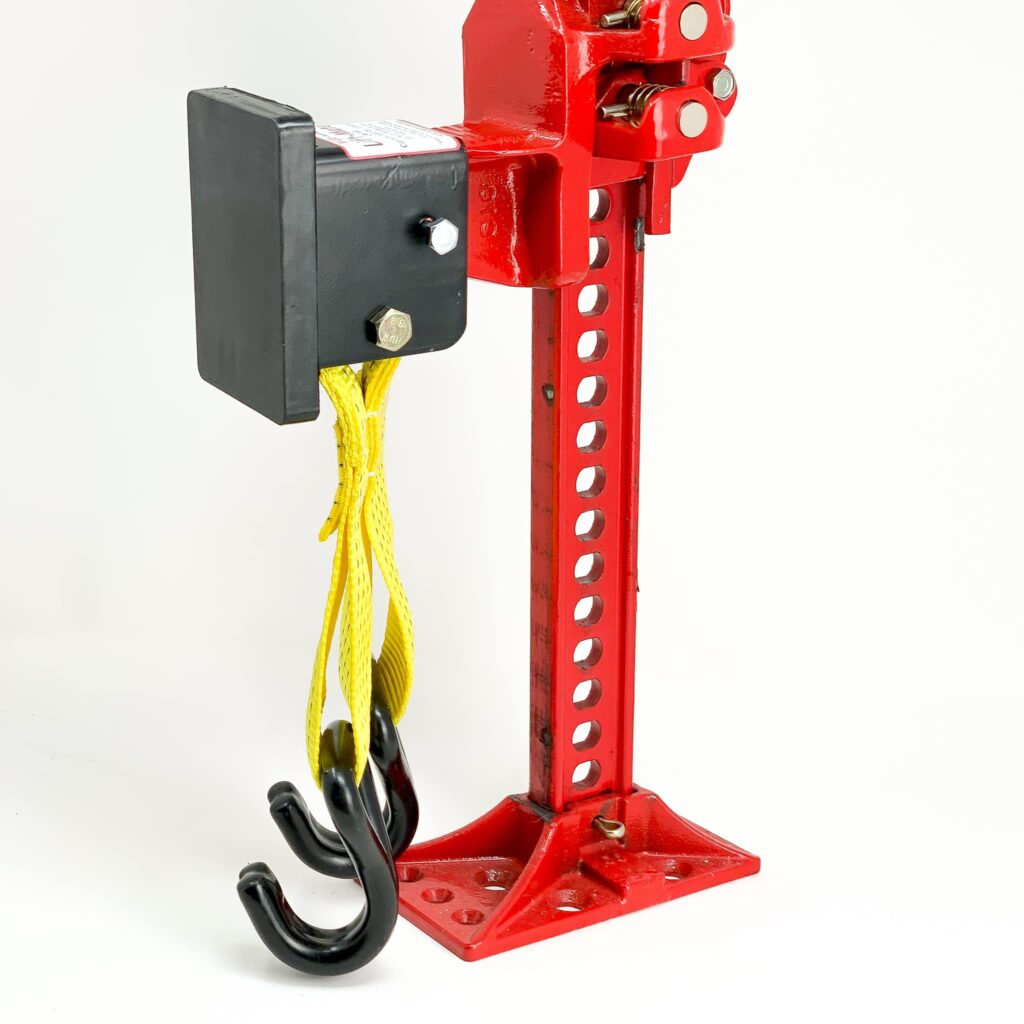
If you like off-roading, you’ve probably seen a hi-lift jack at least once. These are also farm jacks used to pull a vehicle out of the mud or when a wench is required. These can raise a car up to 5 feet off the ground and are rated at 7,000 pounds.
Off-road vehicle lifting, farm equipment repair, and wrenching are just a few applications.
8. Strand Jack: ( Types of Car jacks )
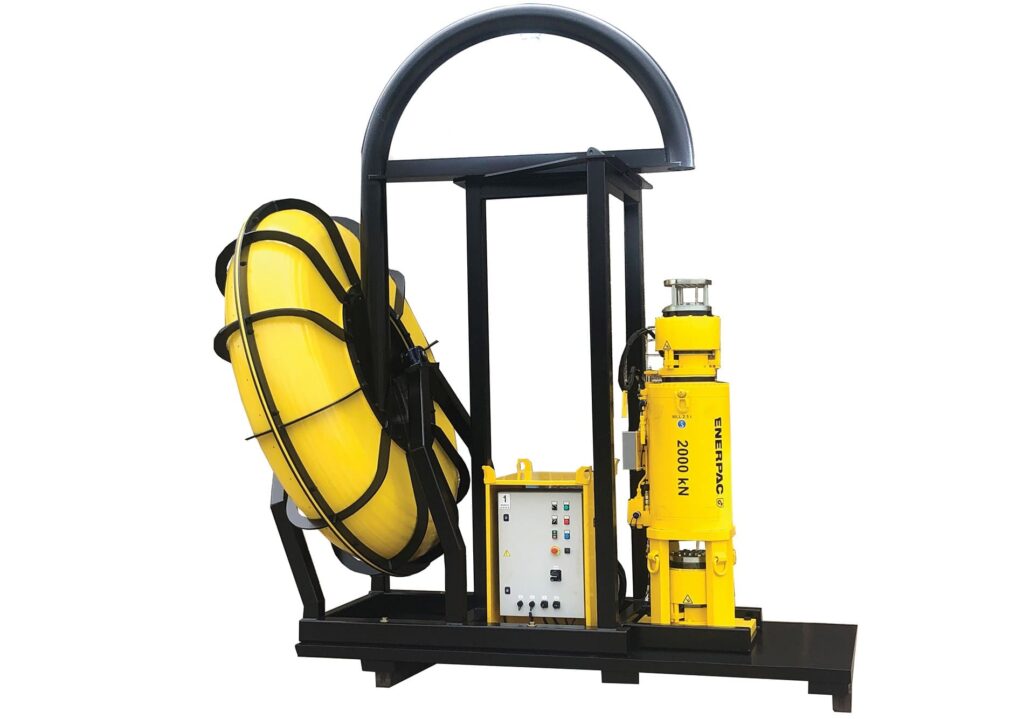
If a heavy-duty lift is required, a strand jack is available. These are extensively employed in construction and engineering and can raise bridges, power plants, and other more oversized, heavier objects.
Heavy-duty lifting, construction, and engineering are some of the applications.
9. Hydraulic Jeck: ( Types of Car jacks )

A hydraulic, mechanical service jack, which is controlled by a crank handle, has a variety of applications. However, it is typically the landing gear on semi-trailers, boat trailers, and 5th-wheel RVs.
Some applications include trailers (boat and carrying) and recreational vehicles.
10. Trolley Jack: ( Types of Car jacks )

The trolley jack, which can lift to 4 tonnes and move through mud and gravel, has a brake mechanism and is one of the safest and easiest jacks to operate in many situations; it is another good option for automotive maintenance.
Automotive repairs, specific high-clearance equipment maintenance, and medium to heavy construction projects are possible applications.
11. Motorcycle Jack: ( Types of Car jacks )
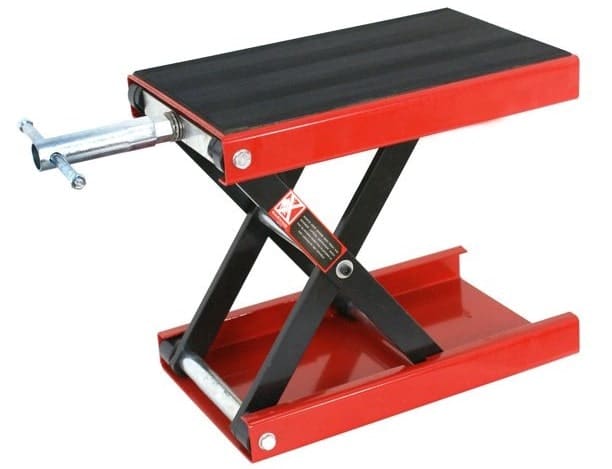
Working on bikes may be difficult due to their tiny, low-profile engines. The whole device is lifted off the ground using a motorbike jack, allowing simple access to vital sections. It may also be used for ATVs and snowmobiles with few modifications.
Repairing motorcycles, ATVs, and snowmobiles are just a few applications.
Specifications of Jacks
- The following are essential lifting jack specifications:
- Load or lift capacity
- Stroke or lifting height
- Minimum height
- Maximum height
- Type of jack: scissors, ratchet, screw, etc.
- Power source: manual, pneumatic, hydraulic, electric, etc.
- Stops and locks for safety
How to Use Car Jack?
The steps to correctly using automobile jacks are as follows:
1. Put the car in the garage and lock it
To begin, you must park your automobile on a hard surface on the ground. To prevent the wheels from rolling accidentally, use wheel wedges, pieces of wood, or bricks to stop the bottom reels. You may also use the emergency brake to keep the vehicle from rolling.
2. Put the Jack in the Right Place and Raise It
Now, utilise automobile jacks, ensuring they can support your vehicle’s weight. If you’re using a mechanical vehicle jack, insert the rod and crank, then raise the jack until it connects to the car’s lift point. If you have a hydraulic vehicle jack, however, insert the handle into the jack’s body and softly pump the handle to elevate the jack until it meets the car frame.
3. Place the Jack Stands in their proper locations
Place the jack stand on the automobile frame’s underside, where the jack is. Place a jack stand beneath the jacking point, adjust the height of the air, and secure it in place with a pin or screw according to the instructions. Slowly lower the automobile to rest on the jack stand after it has been installed.
4. Lower the Automobile
Remove the jack as soon as the vehicle is in position and gently push it to ensure it stands up and firmly secures the automobile. When you’re finished, elevate the car an inch or two using the jack to remove the jack stand.
Slowly lower the automobile by turning the jack handle or crank counterclockwise. Remove the wheel chocks or wedges last.
Choosing the Correct Jack
If you’re considering purchasing a new jack or one for a buddy who complains about not having one, the application will determine the style and power source. And by power, we mean the hydraulic pressure utilised to propel the mechanism forward by pushing the rod out of its sleeve.
The majority of manual jacks are what’s known as “hand pumps.” Pumping air into the hydraulic shaft with the handle raises the jack by pushing out the rod assembly. Most residential floor or bottle jacks need additional pumps to lift the automobile into the air. On the other hand, NASCAR jacks are calibrated to elevate the entire side of the vehicle in one to two pumps.
Others rely on compressed air, but the final effect is the same. The jack’s lift capability has a significant impact. The greater weight that has to be lifted, the more likely you’ll need one that requires compressed air to operate. To operate the jack effectively and efficiently, shops that raise 25-ton semi-trailers to replace a tyre require a heavy-duty compressor.
Car Jack Safety Precautions
- Make sure you’re just using the car jack to elevate the vehicle off the ground and not leave it there for an extended time.
- When working beneath the car, remember to utilize a jack stand. This isn’t enough if you’re using one jack. The automobile jack is only secure when the wheel is turned.
- To block the wheels from rolling, use bricks, wooden wedges, or metal wheel chocks.
- Before raising the automobile, park it on level ground and apply the handbrake. This reduces the chances of rolling.
- Remember that changing the highway’s tyres is never a good idea.
- Choose a car jack and jack stand depending on the vehicle’s weight.
Advantages of Using a Vehicle Jack
When lifting a vehicle, employing a car jack offers various advantages over other methods. It gives enough room to move about while working on the car underneath. This is important for those who need to conduct repairs or perform maintenance independently, such as mechanics or people who do home repairs.
Second, auto jacks may be used to elevate automobiles that have been damaged in some other way or have been involved in an accident. This makes it possible for emergency workers to reach stranded people or clear debris from the roadway.
The last use for automobile jacks is in the realm of leisure; for example, they may be used to raise a vehicle so that it can be driven through more rugged terrain. This may make off-roading more pleasurable while also helping protect the car’s suspension system from being damaged.
FAQs
1. How do I choose a suitable automobile jack?
Your vehicle’s make and model determines the car jack you’ll need. A hydraulic jack is required for most automobiles. However, a manual jack may be necessary in rare cases. Review your vehicle’s owner’s handbook to find the jack you’ll need.
2. Can I use any hydraulic fluid in my automobile jack?
No, it would help if you only used the hydraulic fluid your carjacks instruction manual recommends. If you use the wrong fluid, your jack will be damaged, and your warranty will be voided.
3. How should I take care of my automobile jack?
It’s critical to examine your automobile jack for wear and damage regularly. To avoid rust, you should clean it after each usage.


